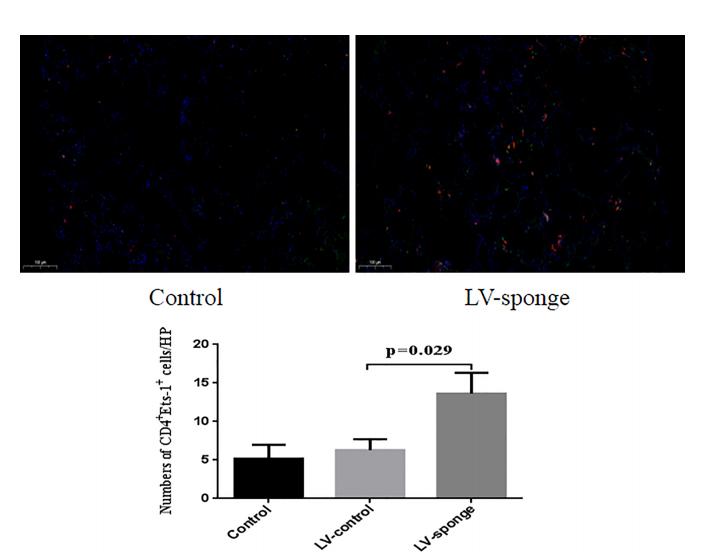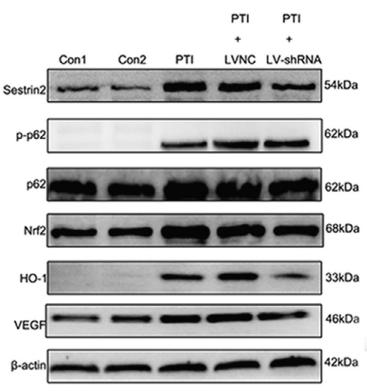| 产品: | 磷酸化 SQSTM1/p62 (Ser403) 抗体 |
| 货号: | DF2985 |
| 描述: | Rabbit polyclonal antibody to Phospho-SQSTM1/p62 (Ser403) |
| 应用: | WB |
| 文献验证: | WB |
| 反应: | Human, Mouse, Rat |
| 预测: | Pig, Zebrafish, Bovine, Horse, Sheep, Rabbit, Chicken, Xenopus |
| 分子量: | 62KD; 48kD(Calculated). |
| 蛋白号: | Q13501 |
| RRID: | AB_2840964 |
产品描述
*The optimal dilutions should be determined by the end user.
*Tips:
WB: 适用于变性蛋白样本的免疫印迹检测. IHC: 适用于组织样本的石蜡(IHC-p)或冰冻(IHC-f)切片样本的免疫组化/荧光检测. IF/ICC: 适用于细胞样本的荧光检测. ELISA(peptide): 适用于抗原肽的ELISA检测.
引用格式: Affinity Biosciences Cat# DF2985, RRID:AB_2840964.
展开/折叠
A170; DMRV; EBI 3 associated protein of 60 kDa; EBI 3 associated protein p60; EBI3 associated protein of 60 kDa; EBI3 associated protein p60; EBI3-associated protein of 60 kDa; EBIAP; FTDALS3; MGC127197; ORCA; OSF-6; Osi; OSIL; Oxidative stress induced like; p60; p62; p62B; Paget disease of bone 3; PDB 3; PDB3; Phosphotyrosine independent ligand for the Lck SH2 domain of 62 kDa; Phosphotyrosine independent ligand for the Lck SH2 domain p62; Phosphotyrosine-independent ligand for the Lck SH2 domain of 62 kDa; PKC-zeta-interacting protein; Protein kinase C-zeta-interacting protein; Sequestosome 1; Sequestosome-1; SQSTM 1; SQSTM_HUMAN; Sqstm1; STAP; STONE14; Ubiquitin binding protein p62; Ubiquitin-binding protein p62; ZIP 3; ZIP; ZIP3;
抗原和靶标
- Q13501 SQSTM_HUMAN:
- Protein BLAST With
- NCBI/
- ExPASy/
- Uniprot
MASLTVKAYLLGKEDAAREIRRFSFCCSPEPEAEAEAAAGPGPCERLLSRVAALFPALRPGGFQAHYRDEDGDLVAFSSDEELTMAMSYVKDDIFRIYIKEKKECRRDHRPPCAQEAPRNMVHPNVICDGCNGPVVGTRYKCSVCPDYDLCSVCEGKGLHRGHTKLAFPSPFGHLSEGFSHSRWLRKVKHGHFGWPGWEMGPPGNWSPRPPRAGEARPGPTAESASGPSEDPSVNFLKNVGESVAAALSPLGIEVDIDVEHGGKRSRLTPVSPESSSTEEKSSSQPSSCCSDPSKPGGNVEGATQSLAEQMRKIALESEGRPEEQMESDNCSGGDDDWTHLSSKEVDPSTGELQSLQMPESEGPSSLDPSQEGPTGLKEAALYPHLPPEADPRLIESLSQMLSMGFSDEGGWLTRLLQTKNYDIGAALDTIQYSKHPPPL
种属预测
score>80的预测可信度较高,可尝试用于WB检测。*预测模型主要基于免疫原序列比对,结果仅作参考,不作为质保凭据。
High(score>80) Medium(80>score>50) Low(score<50) No confidence
翻译修饰 - Q13501 作为底物
| Site | PTM Type | Enzyme | Source |
|---|---|---|---|
| A2 | Acetylation | Uniprot | |
| K7 | Ubiquitination | Uniprot | |
| Y9 | Phosphorylation | Uniprot | |
| K13 | Acetylation | Uniprot | |
| K13 | Ubiquitination | Uniprot | |
| S24 | Phosphorylation | Uniprot | |
| S28 | Phosphorylation | Uniprot | |
| S49 | Phosphorylation | Uniprot | |
| Y67 | Phosphorylation | Uniprot | |
| K91 | Ubiquitination | Uniprot | |
| T138 | Phosphorylation | Uniprot | |
| K141 | Ubiquitination | Uniprot | |
| S143 | Phosphorylation | Uniprot | |
| Y148 | Phosphorylation | Uniprot | |
| S152 | Phosphorylation | Uniprot | |
| K157 | Ubiquitination | Uniprot | |
| K165 | Ubiquitination | Uniprot | |
| S170 | Phosphorylation | Uniprot | |
| S176 | Phosphorylation | Uniprot | |
| S182 | Phosphorylation | Uniprot | |
| R183 | Methylation | Uniprot | |
| K187 | Ubiquitination | Uniprot | |
| K189 | Ubiquitination | Uniprot | |
| S207 | Phosphorylation | Uniprot | |
| T221 | Phosphorylation | Uniprot | |
| S224 | Phosphorylation | Uniprot | |
| S226 | Phosphorylation | Uniprot | |
| S233 | Phosphorylation | Uniprot | |
| S249 | Phosphorylation | Uniprot | |
| K264 | Ubiquitination | Uniprot | |
| S266 | Phosphorylation | Uniprot | |
| T269 | Phosphorylation | P06493 (CDK1) , O15264 (MAPK13) | Uniprot |
| S272 | Phosphorylation | P06493 (CDK1) , O15264 (MAPK13) | Uniprot |
| S275 | Phosphorylation | Uniprot | |
| S276 | Phosphorylation | Uniprot | |
| S277 | Phosphorylation | Uniprot | |
| T278 | Phosphorylation | Uniprot | |
| K281 | Ubiquitination | Uniprot | |
| S282 | Phosphorylation | Uniprot | |
| S284 | Phosphorylation | Uniprot | |
| S287 | Phosphorylation | Uniprot | |
| S288 | Phosphorylation | Uniprot | |
| S291 | Phosphorylation | Uniprot | |
| S294 | Phosphorylation | Uniprot | |
| K295 | Ubiquitination | Uniprot | |
| S306 | Phosphorylation | Uniprot | |
| K313 | Ubiquitination | Uniprot | |
| S318 | Phosphorylation | Uniprot | |
| S328 | Phosphorylation | Uniprot | |
| S332 | Phosphorylation | Uniprot | |
| T339 | Phosphorylation | Uniprot | |
| S342 | Phosphorylation | Uniprot | |
| S343 | Phosphorylation | Uniprot | |
| K344 | Acetylation | Uniprot | |
| K344 | Ubiquitination | Uniprot | |
| S349 | Phosphorylation | Uniprot | |
| T350 | Phosphorylation | Uniprot | |
| S355 | Phosphorylation | Uniprot | |
| S361 | Phosphorylation | Uniprot | |
| S365 | Phosphorylation | Uniprot | |
| S366 | Phosphorylation | Uniprot | |
| S370 | Phosphorylation | Uniprot | |
| T375 | Phosphorylation | Uniprot | |
| K378 | Acetylation | Uniprot | |
| K378 | Ubiquitination | Uniprot | |
| Y383 | Phosphorylation | Uniprot | |
| S403 | Phosphorylation | Q9UHD2 (TBK1) | Uniprot |
| S407 | Phosphorylation | Uniprot | |
| K420 | Ubiquitination | Uniprot | |
| T430 | Phosphorylation | Uniprot | |
| Y433 | Phosphorylation | Uniprot | |
| S434 | Phosphorylation | Uniprot | |
| K435 | Ubiquitination | Uniprot |
研究背景
Autophagy receptor required for selective macroautophagy (aggrephagy). Functions as a bridge between polyubiquitinated cargo and autophagosomes. Interacts directly with both the cargo to become degraded and an autophagy modifier of the MAP1 LC3 family. Along with WDFY3, involved in the formation and autophagic degradation of cytoplasmic ubiquitin-containing inclusions (p62 bodies, ALIS/aggresome-like induced structures). Along with WDFY3, required to recruit ubiquitinated proteins to PML bodies in the nucleus. May regulate the activation of NFKB1 by TNF-alpha, nerve growth factor (NGF) and interleukin-1. May play a role in titin/TTN downstream signaling in muscle cells. May regulate signaling cascades through ubiquitination. Adapter that mediates the interaction between TRAF6 and CYLD (By similarity). May be involved in cell differentiation, apoptosis, immune response and regulation of K(+) channels. Involved in endosome organization by retaining vesicles in the perinuclear cloud: following ubiquitination by RNF26, attracts specific vesicle-associated adapters, forming a molecular bridge that restrains cognate vesicles in the perinuclear region and organizes the endosomal pathway for efficient cargo transport. Promotes relocalization of 'Lys-63'-linked ubiquitinated STING1 to autophagosomes. Acts as an activator of the NFE2L2/NRF2 pathway via interaction with KEAP1: interaction inactivates the BCR(KEAP1) complex, promoting nuclear accumulation of NFE2L2/NRF2 and subsequent expression of cytoprotective genes.
Phosphorylated. May be phosphorylated by PRKCZ (By similarity). Phosphorylated in vitro by TTN. Phosphorylation at Ser-403 by ULK1 is stimulated by SESN2. Phosphorylated at Ser-403 by TBK1, leading to promote relocalization of 'Lys-63'-linked ubiquitinated STING1 to autophagosomes. Phosphorylation at Ser-349 by MTOR promotes interaction with KEAP1 and inactivation of the BCR(KEAP1) complex, promoting NFE2L2/NRF2 nuclear accumulation and expression of phase II detoxifying enzymes (By similarity).
Ubiquitinated by RNF26: ubiquitinated SQSTM1 attracts specific vesicle-associated adapters, forming a molecular bridge that restrains cognate vesicles in the perinuclear region and organizes the endosomal pathway for efficient cargo transport. Deubiquitination by USP15 releases target vesicles for fast transport into the cell periphery. Ubiquitinated by the BCR(KEAP1) complex at Lys-420, increasing SQSTM1 sequestering activity and promoting its degradation. Ubiquitinated via 'Lys-29' and 'Lys-33'-linked polyubiquitination leading to xenophagic targeting of bacteria and inhibition of their replication.
Cytoplasm>Cytosol. Late endosome. Lysosome. Cytoplasmic vesicle>Autophagosome. Nucleus. Endoplasmic reticulum. Nucleus>PML body. Cytoplasm>Myofibril>Sarcomere.
Note: In cardiac muscle, localizes to the sarcomeric band (By similarity). Commonly found in inclusion bodies containing polyubiquitinated protein aggregates. In neurodegenerative diseases, detected in Lewy bodies in Parkinson disease, neurofibrillary tangles in Alzheimer disease, and HTT aggregates in Huntington disease. In protein aggregate diseases of the liver, found in large amounts in Mallory bodies of alcoholic and nonalcoholic steatohepatitis, hyaline bodies in hepatocellular carcinoma, and in SERPINA1 aggregates. Enriched in Rosenthal fibers of pilocytic astrocytoma. In the cytoplasm, observed in both membrane-free ubiquitin-containing protein aggregates (sequestosomes) and membrane-surrounded autophagosomes. Colocalizes with TRIM13 in the perinuclear endoplasmic reticulum. Co-localizes with TRIM5 in cytoplasmic bodies. When nuclear export is blocked by treatment with leptomycin B, accumulates in PML bodies.
Ubiquitously expressed.
Homooligomer or heterooligomer; may form homotypic arrays. Dimerization interferes with ubiquitin binding. Interacts directly with PRKCI and PRKCZ (Probable). Forms ternary complexes with PRKCZ and KCNAB2 or PRKCZ and GABBR3. Also interacts with KCNAB1, GABRR1, GABRR2 and GABRR3. Forms an NGF-induced complex with IKBKB, PRKCI and TRAF6 (By similarity). Interacts with EBI3, LCK, RASA1, PRKCZ, PRKCI, NR2F2, NTRK1, NTRK2, NTRK3, NBR1, MAP2K5, TRIM13, TRIM55 and MAPKAPK5. Interacts with the proteasome subunits PSMD4 and PSMC2. Interacts with K63-polyubiquitinated MAPT/TAU. Interacts with IKBKB through PRKCZ and PRKCI. Interacts with NGFR through TRAF6 and bridges that complex to NTRK1. Forms a complex with MAP2K5 and PRKCZ or PRKCI. Component of a ternary complex with PAWR and PRKCZ. Upon TNF-alpha stimulation, interacts with RIPK1 probably bridging IKBKB to the TNF-R1 complex composed of TNF-R1/TNFRSF1A, TRADD and RIPK1. Forms a complex with JUB/Ajuba, PRKCZ and TRAF6. Interacts with TRAF6 and CYLD. Identified in a complex with TRAF6 and CYLD (By similarity). Identified in a heterotrimeric complex with ubiquitin and ZFAND5, where ZFAND5 and SQSTM1 both interact with the same ubiquitin molecule. Directly interacts with MAP1LC3A and MAP1LC3B, as well as with other MAP1 LC3 family members, including GABARAP, GABARAPL1 and GABARAPL2; these interactions are necessary for the recruitment MAP1 LC3 family members to inclusion bodies containing polyubiquitinated protein aggregates and for their degradation by autophagy. Interacts with FHOD3. Interacts with TRMI5. Interacts with SESN1. Interacts with SESN2. Interacts with ULK1. Interacts with UBD. Interacts with WDR81; the interaction is direct and regulates the interaction of SQSTM1 with ubiquitinated proteins. Interacts with WDFY3; this interaction is required to recruit WDFY3 to cytoplasmic bodies and to PML bodies. Interacts with TRIM23. Interacts with LRRC25. Interacts with TRIM50. Interacts with TRIM16. Interacts with STING1; leading to relocalization of STING1 to autophagosomes. Interacts (when phosphorylated at Ser-349) with KEAP1; the interaction is direct and inactivates the BCR(KEAP1) complex by sequestering KEAP1 in inclusion bodies, promoting its degradation.
The UBA domain binds specifically 'Lys-63'-linked polyubiquitin chains of polyubiquitinated substrates. Mediates the interaction with TRIM55. Both the UBA and PB1 domains are necessary and sufficient for the localization into the ubiquitin-containing inclusion bodies.
The PB1 domain mediates homooligomerization and interactions with FHOD3, MAP2K5, NBR1, PRKCI, PRKCZ and WDR81. Both the PB1 and UBA domains are necessary and sufficient for the localization into the ubiquitin-containing inclusion bodies.
The ZZ-type zinc finger mediates the interaction with RIPK1.
The LIR (LC3-interacting region) motif mediates the interaction with ATG8 family proteins.
研究领域
· Cellular Processes > Cell growth and death > Necroptosis. (View pathway)
· Cellular Processes > Cell growth and death > Cellular senescence. (View pathway)
· Organismal Systems > Development > Osteoclast differentiation. (View pathway)
文献引用
Application: WB Species: Mouse Sample:
Application: WB Species: human Sample: embryonic kidney cells
Application: WB Species: Rat Sample: brain tissues
Application: WB Species: rat Sample: C2C12 myoblasts
限制条款
产品的规格、报价、验证数据请以官网为准,官网链接:www.affbiotech.com | www.affbiotech.cn(简体中文)| www.affbiotech.jp(日本語)产品的数据信息为Affinity所有,未经授权不得收集Affinity官网数据或资料用于商业用途,对抄袭产品数据的行为我们将保留诉诸法律的权利。
产品相关数据会因产品批次、产品检测情况随时调整,如您已订购该产品,请以订购时随货说明书为准,否则请以官网内容为准,官网内容有改动时恕不另行通知。
Affinity保证所销售产品均经过严格质量检测。如您购买的商品在规定时间内出现问题需要售后时,请您在Affinity官方渠道提交售后申请。产品仅供科学研究使用。不用于诊断和治疗。
产品未经授权不得转售。
Affinity Biosciences将不会对在使用我们的产品时可能发生的专利侵权或其他侵权行为负责。Affinity Biosciences, Affinity Biosciences标志和所有其他商标所有权归Affinity Biosciences LTD.




